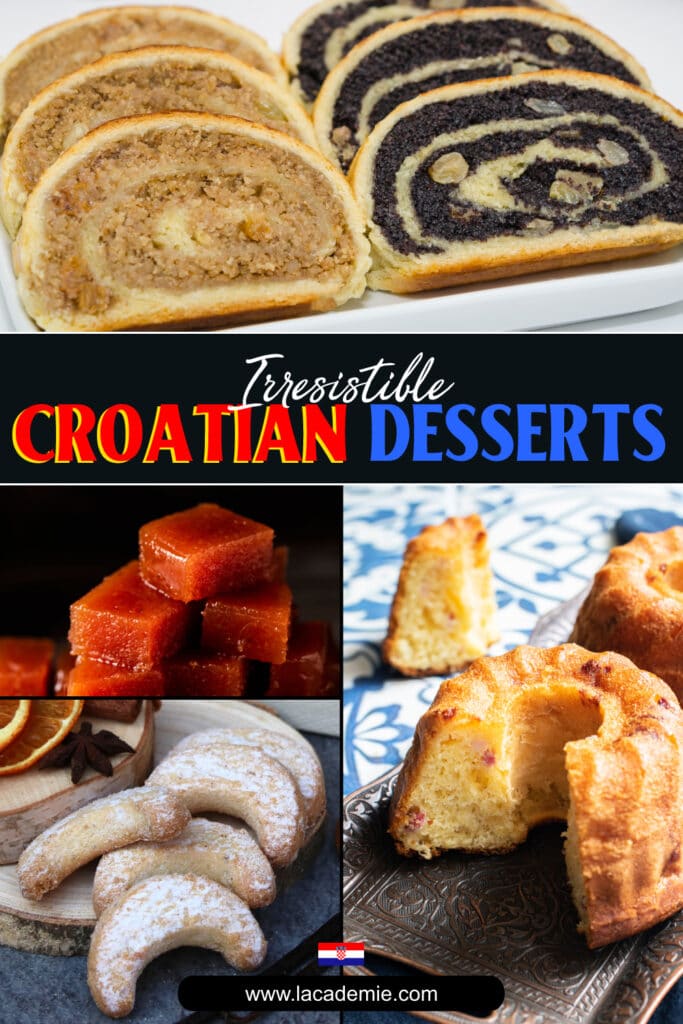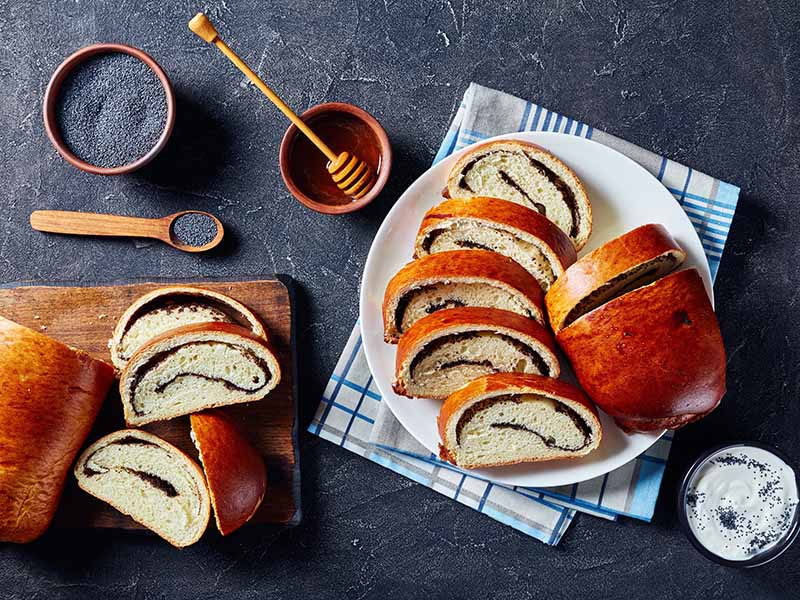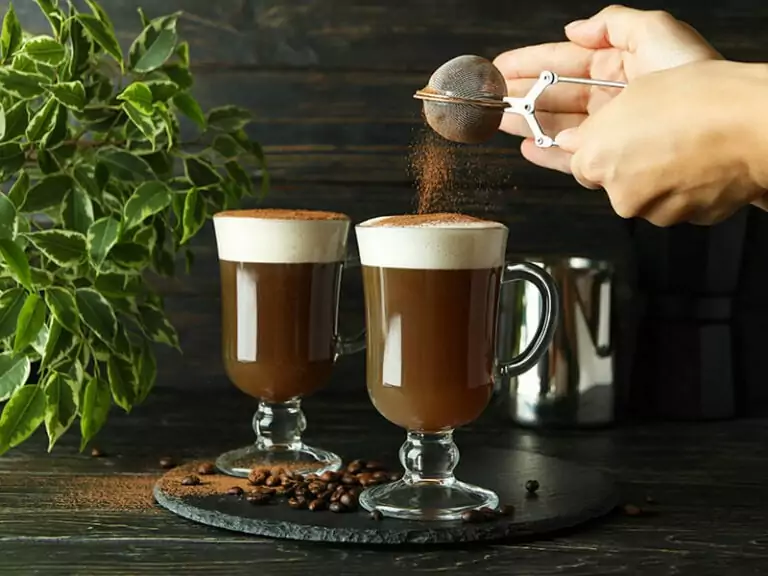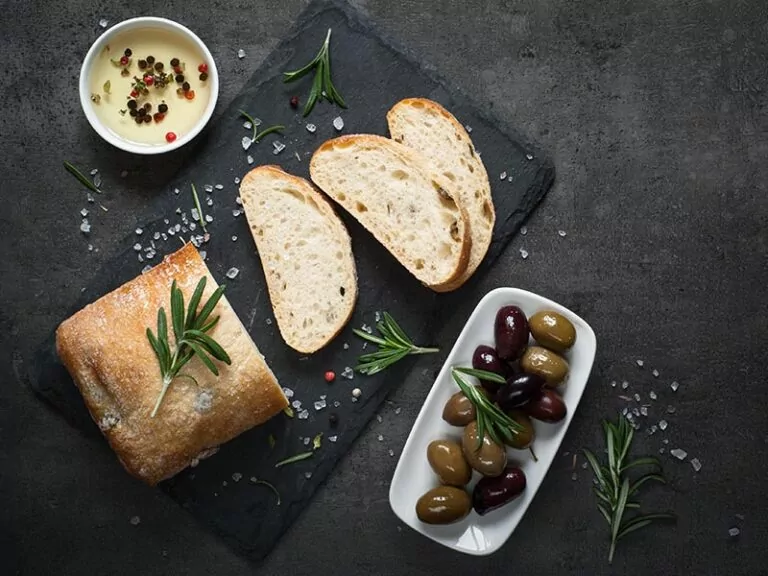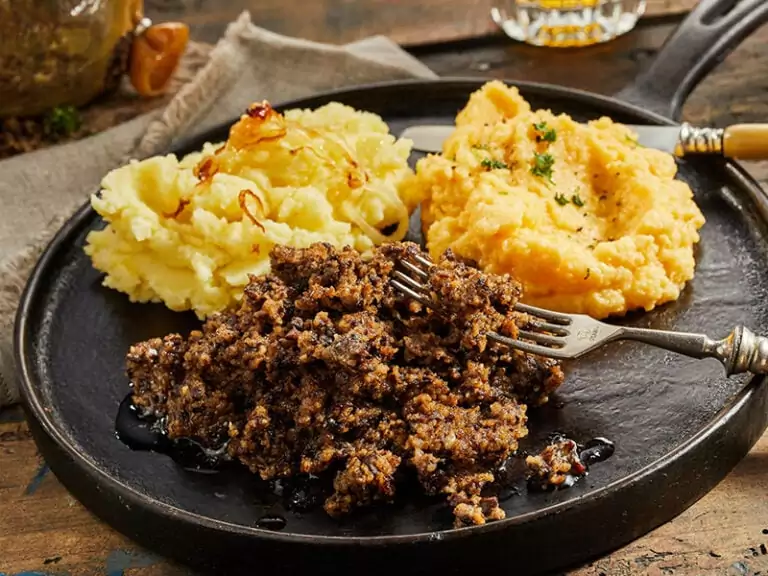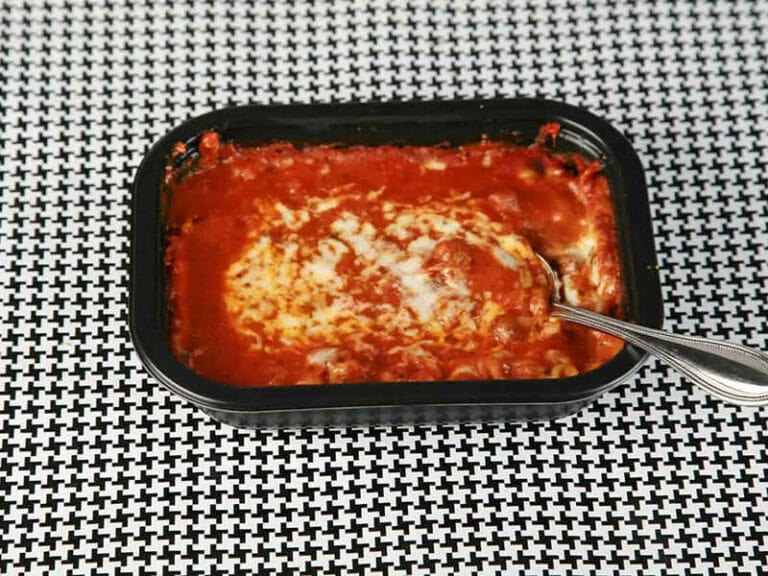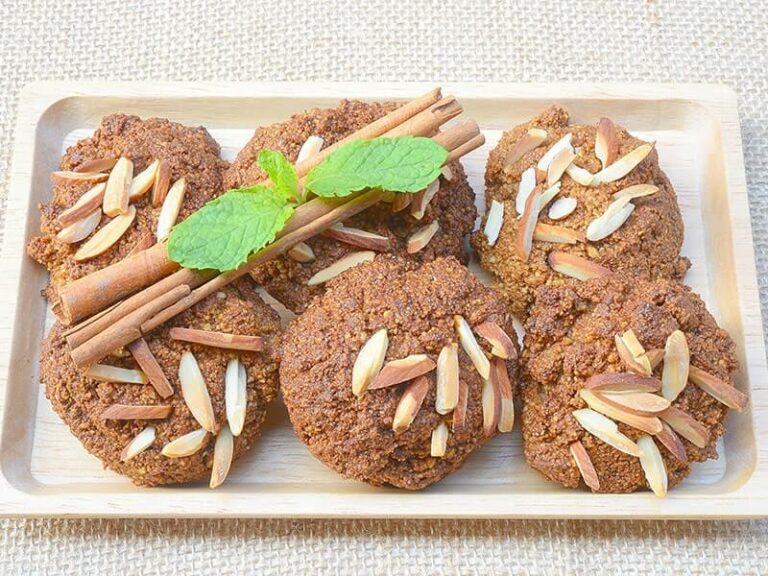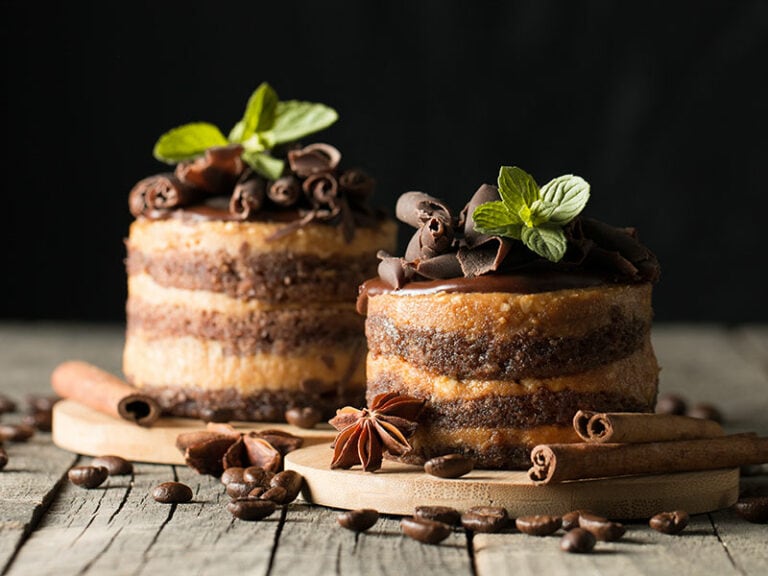Croatia is an adventurous place; indeed, you will find the Croatian desserts as spotlights. It’s easy to get lost in the Diocletian’s Palace when visiting Split. Because it is not a distinct tower, the Old Town is constructed to cover the palace.
Sweets from Croatia are pleasingly decadent! They vary from flaky, cheesy pies to creamy, luscious cakes. You can get them all, from crunchy cookie pieces to wafer strudels. Furthermore, most traditional Croatian delicacies are a mash-up of various culinary trends.
Every province has its delights and specialties, from west to east, north to south. To the next generation, these bread and pastries, cookies, cakes, and other sweets are inherited and promoted ideally. Are you ready to rank up the famous highlights?
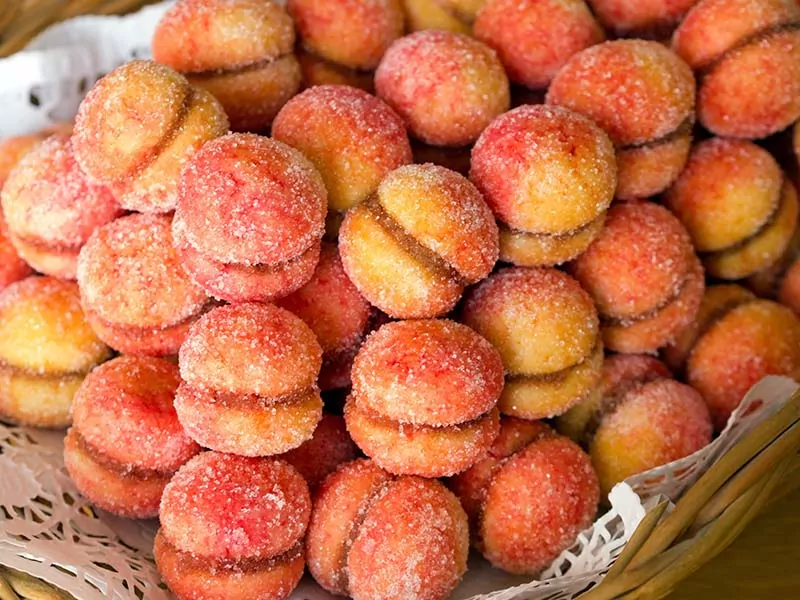
14 Croatian Cakes That Soft And Tasty Beyond Your Expectation
From the rich plains of the Danube area the far south of the Mediterranean, Croatian desserts are as diverse and varied as the region itself.
Even it’s the first time you are served a homemade cake from Croatia, you surely recall how delicious it is. It’s now your turn to test your skills.
1. Hrapoćuša Torta (Brač Island Cake)
You can hear many versions of the spelling Hropocusa, Hrapocusa, and Hrapacusa. All varieties, however, refer to a particular rich cake from the Dol stone village on the island of Brac.
Let me call the bottom layer of this Brač island a rich sponge cake. It’s prepared by mixing flour with egg whites, egg yolks, walnuts, and lemon zest.
The top layer consists of more nuts, sugar, and egg whites. There is no single recipe; each Dol home has its own heavily classified recipe. And so do you!
The dubbed Brac’s “sweet aphrodisiac” cake is so unique that it is protected cultural heritage by Croatia’s Ministry of Culture. Have you ever tried?
2. Kugelhopf (Croatian Bundt Cake)
You can bake the Croatian bundt cake in a ribbed molded pan. Now you have a chance to admire the traditional Christmas dessert of Croatia. Kugelhupf or Gugelhupf is shaped like a giant doughnut with a yeast base and a hole inside.
In Croatia, there are two types of Kuglof. It is enhanced with walnuts and raisins in northern areas. Kuglof is produced in the south region using orange zest, candied lemon, figs, and almonds.
This raisin-filled cake has become a staple of France’s Alsace region and other foreign countries like Switzerland or Germany despite its Austrian origins. You can get it for breakfast or brunch.
I know once you dive into this clip, you cook your Kugelgopf right after. Hurry up!
3. Zagorje’s Zlevanka (Sweet Cheese Cornbread)
Zlevanka has a flavor similar to “cheesecake pair cornbread.” Even though the basic sweet, it is one of the most delicious. Fresh cheese and corn grits are the main ingredients in this local delicacy. Also, you can add the grated apple into the batter.
In many different regions, there are Kuružnjača, Kukuruznjača, Bazlamača, Zlevka, and Razljevuša depending on the ingredients it makes. However, maize flour is the common element in all the recipes. Women in some areas add semolina or wheat flour to it.
I’m impressed with the result coming out thin since the very thin batter baked in a large baking pan. It can be either savory or sweet. Have you ever added some spices, nuts, or fruits to the mixture to the mixture? Simply serve with plum jam, and your guests soon are overwhelmed.
4. Čupavci (Chocolate Coconut Sponge Cakes)
Owning the fuzzy look of shredded coconut layers, the Čupavci means “furry.” Let’s make the staple Čupavci, a European version of the famous Australian lamingtons.
Coconut is not often used in classic European sweet courses, but my friend from Tahiti sees coconut as a prominent ingredient. Lamington’s lovers then requested the recipe.
Even while everyone adores the little pieces, the most frequent idea is that they are a bit dry inside. For the small Čupavci, I have another option of breeds pastry. Chiffon batter is created using oil rather than melted butter.
Surely you won’t stop loving the airiness of these delectable coconut desserts. You can reach it by folding stiff meringue into the mixture. Give it a try!
5. Stonska Torta (Ston Cake)
Dubrovnik’s cuisine is one of the best in Croatia; it has become popular worldwide. This Stonska Torta is made with tube-shaped noodles like penne or ziti. Toss them with grated chocolate and ground nuts before wrapping them in pastry dough, then top them with fresh berries.
A cake made from pasta may seem an odd mix, but this sweet-savory creation works. The locals call them Makaruli; it originated from the small town of Ston on the Pelješac peninsula.
I usually make the pastry using olive oil, butter, or lard. Sometimes, you can add powdered or grated chocolate to the filling or simply leave it. This cuisine has a long history and served as a luxury symbol in the past.
6. Ledeni Vjetar (Icy Wind Cake)
The moment you cut the stunning layers of icy wind cake, you will be overwhelmed and have more motivates to make it your own. It’s creamy and quite hard to build, but you will have a masterpiece when you finish it.
This elegant cake is the party queen throughout Croatia, as refreshing and light as wind.
It takes hours to create layers of buttercream, smooth meringue, whipped cream, and fruit. And shaping them together requires good pastry abilities.
I chose to stick with the olive oil crust and pick the filling of almond and citrus notes. Try sprinkling one or two ounces into the almond mixture if you enjoy chocolate.
Surely, you can’t stop watching this guide. It’s your turn to bake and enjoy this incredible icy wind cake.
7. Imotska Torta (Almond Lattice Cake)
Soon you will impress the filling of almond, cinnamon, lemon zest, and orange, covering outside is the latticed thin pie crust. That’s the goodie originated from the small town of Imotski. Another notable point of this dessert is that the woven lattice top is generally studded with whole-grain almonds.
Both are intensely seasoned and spiced with various sorts of alcohol, ranging from maraschino cherry liqueur in the filling to white wine or prošek in the pastry.
There are two essential things you must keep in mind. The first is the baking technique, and the second is the number of spices. The best part is that if you make a mistake in the cooking time or herbs, it still be good but not as perfect as you like.
8. Madjarica (Layered Chocolate Slice)
Madjarica means “Hungarian girl.” It is a typical Croatian layered cake served on special occasions. What a stunning cake for me to eat and to admire! At the very first bite, you will be grateful for spending time on this cake.
The original Madjarica has two dough layers covered with chocolate. Nowadays, you can find many layers with white chocolate, jam, and other fillings. There are many layers, too.
You will need a big baking tray 10×15 inches or smaller, about 13×9 inches. You should prepare six crusts and divide five equal part filling. It’s best to keep the crust not be too thick. It is critical to leave the cake overnight so that the crusts can soak up the filling’s liquid. Just cut them into rectangles!
Glad to find this baking video. Measuring the custard weight is not that hard!
9. Bijela Pita (White Slice)
It’s a squeeze to turn the Mađarica into Bijela Pita, or the locals call Bijela Mađarica. These white slides are the best catchy when you wish something plain sweet, not chocolate, not ice cream.
Bijela pita, or “white pie,” is believed as a delicacy of the countryside. When preparing the pita bread, make sure you use a hot and non-stick skillet. Inevitably, your pita bread lifts well.
You can use coconut flour and oat fiber when you want low-carb bread. The oat fiber becomes a genuine low-carb item since its texture is familiar to flour, adding more fibers.
Remember that the cake layer should be cooled totally before spreading the filling. I use the rolling pin to transfer my dough layer into the cookie sheet pan. Then, gently cut around the pan’s edge using a small knife, forming a flawless rectangular dough layer. Head it up!
10. Cremeschnitte (Custard Slide)
I immediately think of a charming Cremeschnitte (Samoborske Krempite or Kremšnite) when anybody talks about Samobor, a town that is 20km far from Zagreb. It’s famous for the yellow light shade custard with a thin whipped cream layer right below the top.
You can pick between flake the dessert or top it with one more puff pastry. From my experiences, just leave it supporting you when you cut and, of course, a neat look.
The pastry retains its crunch the best when it’s finished, so never wait too long. Just dig in this Cremeschnitte. It’s still good after a day, but the pastry turns soggy slightly.
Additionally, you can replace the plain flour with corn starch or cornflour. Make sure the beaten cream is thick enough to retain its shape and not fall apart while cutting.
11. Međimurska Gibanica (Medjimurijan Layer Cake)
Međimurska is a famous layered pastry from the Meimurje region. Gibanica Međimurje cake has four different fillings and a lot more. Time ago, this incredible delicacy is baked in clay vessels, and in the modern time nowadays, homemakers replace them with metal trays.
Because of the large nutrition values, you can serve it alone or as a dessert after parties. Remember to bake in the oven until reaching the golden brown outside; the pastry is ready to eat. Just slice into squares for serving cold or warm.
Typically, the cake has four layers and between two-layer is a strudel dough. The poppy seeds, walnuts, cinnamon apples, and cottage cheese make up the layers.
Here are my two ways to decorate this layered masterpiece. Simply brush the melted butter over the last phyllo dough, mix one egg and about 180 grams sour cream, and then pour on the cake’s top. The outcome will amaze you!
12. Orahnjača – Makovnjača (Walnut – Poppy Seed Rolls)
Orahnjača, known as Orehnjača, and Makovnjača are delicacies from yeast dough you can pass by on special festive occasions. The orah means walnuts in Croatian; that’s why the cake is named orahnjača. Whereas the poppyseed (mak) paste fills up the fluffy Makovnjača.
With these two seed rolls, you can apply the same recipe but keep an eye on filling. They’re unfamiliar. The yeast-based doughs are kneaded then flattened. After baking, simply sprinkle the powdered sugar over your poppy seed and walnut rolls. When the filling covers the dough, roll up from one end to another.
Sometimes, I add raisins into the Makovnjača filling. Keep in mind that spreading the poppy seed evenly while the dough is rolling out is a must. For the walnut cake, just spread the top is enough.
13. Palačinke (Croatian Pancakes)
Palačinke is pancakes but thin as crepes from Croatia and Serbia’s cuisine. When filled with fruit, jam, cheeses, rolled, and sweets, they’re genuinely your mouth-watering pancakes.
This pancake has a higher quantity of milk and flour than other regular cakes like crepes or blini; the result turns out pretty denser, shinier, and tighter.
Be free to try spelt, einkorn, rye, millet, whole-wheat, or buckwheat flours. You should adjust the pan to medium heat to cook the pancake in seconds but not too hot if not, the cake’s surface will appear bubbles.
It’s alright to enjoy both sweet and savory palačinke. With the tasty versions, I go with ham or cheese as filling. Simply sprinkle some sugar or squeeze on top some lemon juice when you’re crazy at sweet pancakes. My favorite one is with chocolate sauce or fruit jam; roll and eat, then roll and eat again and again.
Never wait too long to add a Croatia breakthrough into your weekly items. Masterful, fluffy Palačinke is on the way!
14. Lumblija (Blato’s Sweet Bread)
Follow me to the Korčula’s island and find a treasure made in Vela Luka and Blato’s port towns that export olive oil and wine. Traditionally, Lumblija is baked to tribute the persons who passed away, generally around All Saints day.
During the summer, the cake is also displayed on Brač island, near Split. Before kneading the dough, you should wait 2-3 hours to rest. Later, you shape it into the bread form and bake at 180 degrees for 35-40 minutes. When kept at room temperature, the cake can last up to a month.
Lumblija’s dark hue and distinct flavor are primarily due to vareniki. Varenik is a syrup prepared in the process of making wine. The little secret is that it should not boil, cook in low heat for hours to get the best.
It’s not just about the history; it’s an art to pour the varenik syrup into the dried raisins.
6 Crunchy Croatian Cookies For You To Nibble
These iconic Croatian sweets convince you to visit Croatia as soon as possible. It’s sorrowful to spend Croatia’s holidays without cookies and a big table meal.
I hope my guide in making the cookies from Croatia will give you a hand. What a blessing to know and get these lifetime symbols to the ones you love!
15. Trogirski Rafioli (Trogir Sweet Filled Cookies)
The shortbread cookies Rafioli are famous around Dalmatia. You can easily find them at any big event, from weddings to baptisms or funerals. Besides almonds, I have discovered many upgrade versions with cream and chocolate, adding vanilla and citrus zest for flavoring.
Let’s take this recipe to define the unique Croatian sweets, outstanding much more than your imagination. I have two options to bring you to the Balkan partisans from the kitchen.
While making the sunset Rafioli, you can add lemon zest but never the juice. Any acid is not good. The Trogir originated version is a must to enhance the floral tone with orange or lemon. Are you ready?
16. Breskvice (Little Peach Cookies)
The Breskvice tastes far more luxurious but looks like small peaches. Sandwiched cookies are between the cute two caps that mix rum with apricot or peach jam. Later, you coat the cookie caps with sugar and pink juice.
Generally, they aren’t too sugary or sweet, still packed with elegance and richness. The filling plays a vital role in holding the cookies together.
You should chill the dough for some hours, making it quicker to portion. To help the color shows up better, I bake the Breskvice brown on the bottom, not much on top. Pay attention!
17. Vanillekipferl (Vanilla Crescent Cookies)
The high butter mixture with no egg contributes to the quality of Vanillekipferl. These shortbread cookies are sprinkled with vanilla sugar and nuts. Thanks to its incredible taste, Vanillekipferl is also famous in the culinary culture of Slovakia, Swiss, and other European countries.
In this recipe, you can substitute almonds with ground nuts. When you want to cut down nuts totally, you can return them all with flour. Alternatively, toast some finely ground oatmeal for something chewy.
Please note that the vanilla crescents are pretty easy to break when you don’t cool them down entirely. Let’s sprinkle some powdered sugar to keep them in shape.
You can shape the dough pieces into crescents by hand or cookie sheet. Just make it your way!
18. Medenjaci (Ginger Honey Cookies)
Instead of molasses frequently used in North American sweets, the Croatian recipes pair honey, rum, and sometimes ginger. As a result, the Medenjaci ginger honey cookies are lighter and somewhat sweeter than the typical North American version.
A thick layer of cream cheese filling is nestled between two ginger honey pieces. The filling is made with cream cheese, butter, and sugar, then spiced with some more honey and ginger to enhance the tastes.
These excellent ginger desserts are the best choices for gifts over the holidays because they retain chewy and soft textures for a couple of weeks. Remember to store them at room temperature in an airtight container.
Have you ever felt like you never had enough Christmas cookies? This guiding clip is full of gingerbread aroma; just bake Medenjaci whenever you want.
19. Paprenjaci (Black Pepper Cookies)
Soon you will impress the traditional patterns in square and rectangular cookies. Furthermore, Paprenjaci contains two elements that highlight them from other spiced sweets: black pepper and honey.
So, where does the idea come from? In Croatia, papar means pepper, and Paprenjaci cookies are used in the baking process.
I have to emphasize that it is delicious. You can try giving high kicks with hot spices, as cool as the black pepper undertones.
To prevent the dough from sticking, let’s dust the mold with some flour. It’s no problem if you don’t have wooden molds. Feel free to cut them into pieces using any primary cutter. Give it a try!
20. Raspucanci (Chocolate Crinkle Cookies)
Here you will have fantastic chocolate cookies fulfill with powdered sugar. It’s named Raspucani since Raspucaci refers to “cracked” in Croatian.
The rich dough balls are covered with two types of sugar; the first is granulated sugar, and the next is the confectioners’ sugar. The initial layer has the duty of capturing the snowy appearance of the second layer. This white sugar dusting always reminds me of holidays and winter.
From my experience, the cool dough works pretty cool than room-temperature dough. It’s easier for you to shape. The most stunning cookie is the one that cracks when out of the oven. Do you wish anything other than a soft, tasty choco cookie?
These cookies’ wintery look makes them ideal for Christmas. Guess how many Santa Claus will eat?
Keep 9 Precious Croatian Pastries & Breads In Reach
Dubrovnik’s sandy beaches, gorgeous islands, medieval towns, and of course, famous sweets are all worth a visit. One of the most hunting countries in the world!
You can easily find commons in French, Austrian, Turkish, and Italian pastries. Nothing compares to the homemade strudel pastry. You never want to put it down once you try the Sirnica Easter Bread. Hurry up; goodies are all the way!
21. Princez Krafne (Croatian Cream Puffs)
In Croatian, the Princez Krafne has a literal meaning, the princess’s doughnut. The pastry is endowed with royal powers because it can rise with no yeast.
You realize it’s a special occasion whenever you’re served these delicious puff pastry sweet treats. To treasure the crispy coating with the light, airy filling inside, the Krafne is made using leavened dough, then deep fry until reaching a golden brown.
You can serve the puffs plain or fill them with vanilla custards or jams. The top is typically drizzled with chocolate or dusted with powdered sugar.
22. Bucolaj (Croatian Doughnuts)
Would you enjoy doughnuts? This Bucolaj comes from Bujstina, located northwest of Croatia’s Istrian peninsula.
Bucolaj, like doughnuts, you can shape them like a bagel or a tiny scone. After baking, I dip them in milk and dust them with chocolate or sugar. If you like, you can make a chocolate doughnut, too.
You should let the dough rise, then cut it into strips. Next, make the circle shapes with a hole inside. The dough is baked, and the Bucolaj is quickly plunged in a mixture of warm milk and vanilla sugar to form a thin protective film on its surface. Practices make this step completely time by time!
23. Pita Sa Jabukama (Balkan Apple Phyllo Rolls)
Almost every house in Croatia has apple trees; that’s why apple pies are called a routine. You can turn your apples into a caramelized dessert with just sugar and a bit of spice. Plus, it’s a true vegan treat popularly served on Lenten’s days.
Prepare the dough, chop the apples, and that’s all. This pie takes more than an hour to finish, combine all the stuff and bake around 45 minutes.
This Croatian apple pie has many flavors. You can top shredded walnuts or cottage cheese over the pie. Anyway, I guarantee you’ll enjoy my recipe!
24. Dalmatinski Kolac Od Smokvi (Dalmatian Fig Tart)
Stay tuned until I share with you my favorite tart of all time. It’s so simple to make with figs. It’s so delicious, smooth, and custardy. What a pleasure to try!
Figs are essential in the Dalmatian diet and frequently used in sweet treats. You will pass by the Dalmatinski Kolac Od Smokvi on Christmas time, serving with an aperitif as the Easter desserts.
A scoop of the creamy piece right away brings you to the Dalmatian coast, full of fresh figs and golden honey you will adore. If you want a filling like baked custard, you can combine thick cream or basic cream cheese with egg yolk, poppy seeds, and vanilla.
I’m sure a dash of lemon zest will bring up the tone. What an excellent match!
25. Kiflice (Jam-Filled Crescents)
Almost every Croatian home has its own crescents recipe, Kiflice or Kifle. Many different ideas you can come across, yeast or no yeast crescents with cheese, jam, poppy seeds, or walnuts. My family’s favorite jam is rosehip, plum, or apricot.
Plus, you can use Rasberry, strawberry, or currant paste if you want. When your kiddos request a dessert with Nutella, it can also work. Kindly notice your jam since it’s easy to spill while baking. Try to use 100% fruit paste or jam or cut down the filling quantity to look nice.
My routine is dusting the jam crescents right before serving with icing sugar. To help roll easier, lay the baking paper beneath the dough since it’s pretty soft.
You can keep them in a container, good to stay cold or warm. You don’t need to refrigerate, but you can still keep it in the freezer.
26. Strudel od Jakuba (Croatian Apple Strudel)
I do love this Strudel od Jakuba much more, I can say. So, what do you need? Apples, for sure. Any type of apple is excellent, from fresh to jarred, from tinned to frozen. Especially the Polish apples sold in supermarkets.
The next step is making the strudel pastry. Never miss the tools: a cotton towel, parchment paper, a pastry brush, a rolling pin, and a surface to roll your dough. Fully prepared?
When you find it’s pretty complicated to make the pita or pastry dough home, you can replace them with store-bought dough. At least, you should try once. It’s pretty fun and more straightforward than you think. I get acquainted with the jelly-roll style, and my supporter is the dishtowel, lol.
Let’s enjoy this instruction from a cook in Croatia. Do you want to challenge him?
27. Salenjaci (Croatian Croissants)
One of the precious jewels of East Croatia is the Salenjaci. They’re commonly known as “croissants with character” and are a creamy Slavonian and Croatian pastry.
Salenjaci is a delicious puff pastry made with lard- a critical component that is undoubtedly forgotten. They are also known as “thousand-leaf cakes” due to their layered structure, folding up the rolled-out dough turn by turn.
Now you have a perfect choice for snack or brekkie, sprinkle some powdered sugar on top and enjoy. Be careful of the hot jam; you may burn the tongue when eating right after baking. I am addicted to the ground walnuts in these croissants. How’s it for you?
28. Sirnica (Easter Bread)
Sirnica (or Pinca) is a classic Easter sweet bread made in Istria, Dalmatia, and other parts of Croatia. As usual, you can top with choco syrup or add chocolate chips into the dough. Tasty and modern, out of your expectation!
To make an appealing garnish, smash some sugar cubes. Remember to pay attention to the clock when you place your sirnica into the fully heated stove. For rising the flavor, let your bread cool down completely.
The dough is enhanced with eggs and then brushed with egg wash to get the wonderful brown touch. Holy Saturday is the best day to bake this Easter treat. You can take them to church the next day, and it’s absolutely a blessing to have it with ham on Easter morning.
29. Povitica (Croatian Swirl Bread)
Wow, I’m heading to a crowd-pleaser bread named Povitica. It’s homemade, loaded inside a walnut cinnamon filling. You know, my family has it almost every week.
Whether you use a rolling pin or hands, remember to thread the dough as thin as seeing through it. Cover your filling and keep the filling stay at room temperature until the dough rises.
The next critical point is that all the components need to be lower than 105°F before adding the yeast. If not, your yeast could be killed, and not sure the bread will rise. Pay attention!
10 Other Unique Croatian Sweets, You Must Note Down
The glamorous items are saved till the end, and right now, you are heading to the authentic arts of sweet treat in Croatia. They have lovely tiny sweets, buttery cakes, hot pastries of various sizes and forms.
Follow me to find out the only sweet that whispers “Forget me not” in your memories!
30. Oblatne (Tort Wafer Cake)
The tort wafers with a filling are Oblatne or Oblande in the Balkans. There are two main fillings you can stuff into your Oblatne. The first filling is a sauce of walnuts, ground cookies, and chocolate. The second is the Balkan edition of dulce de leche; people call it mystical caramel for wafers.
The very first Oblatne version uses chocolate and caramelized milk. To get the renowned dulce de leche, you need to cook sugar and milk for 2 and 3 hours. Nowadays, homemakers can also bake the condensed milk into dulce de leche. Remember to add voila, butter, and dark chocolate to this shortcut.
Last but not least, a good filling matches dry waters soon become soggy. Fresh and crisp wafers are the best, aren’t they?
31. Dalmatian Smokvenjak (Dried Fig Cake)
The value of figs is hard to deny; you can exchange 2-pound figs with 12-pound potatoes or 2-pound beans. Fig cake, also known as hib, is made with dried figs, brandy or maraschino, powdered sugar, almonds, and bay leaf for better taste.
It’s refreshing like the summer sun and the sea. The sweet flavor from a newly picked fig is incredible. It takes about 15 days to dry up. Apart from bay leaves, you can use rosemary to reserve four months.
You can try the fig cakes right after baking, but it’s hard to cut. Today, the fig cake doesn’t pretty hard since it’s made at low temperature in the oven. After an hour, I wrap them with paper and send them as gifts to my friends. How’s it for you?
32. Knedle Sa Šljivama (Plum Dumplings)
Knedle sa šljivama has become viral in many northern regions in Croatia. The plum dumplings first originated from the Austro-Hungarian Empire.
There is nothing better than a full mouth of dumplings with crispy crumbs and melted plum. Once you get it on the table, you are ready to give up your main course to enjoy this fruity dessert.
The mashed potatoes are best to stay in the fridge before forming dough. Later, you shape the dough in the round shape for each plum, mix a sugar spoon and roll it up like a golf ball. I think it’s the standard for most of the dumpings.
33. Fritule (Croatian Fritters)
One of the loveliest traditional Croatian sweets you should not miss is the round fritters Fritule. Never forget the delightful scent, adding citrus and vanilla flavor to enrich the buttery base.
Brandy is the secret formula in making these little doughnuts. If preferred, you can add strong spirits, fruit liquors, or rum into the dough.
Traditionally, the sweets are made from yeast dough. I have customed a new option; let’s try baking powder and plain yogurt. Having some rum into the mixture prevents the pastry from soaking oil. Be healthy, be elegant by adding some raisins to chew!
Quickly the sweet dough balls become the famous winter treat you can serve with some forest fruits or caramel and chocolate sauce. Yummy yummy.
34. Kroštule (Sweet Pastry Knots)
In February yearly, soon the air fills up with the Kroštule smell. That’s when you realize the carnivals are coming to the towns of Dalmatia and Istria. The sweet pastry knots are deep-fry dough shaped like ribbons, covered with powdered sugar after frying.
You can custom your shape of kroštule as if you make sure the dough is thin enough for its crunchy. Tie the dough in a knot, shape as flowers and strips, or simply cut it and braid it. You should check the oil carefully, the hot oil with low, medium heat.
You can use whole eggs or only egg yorks. It’s flexible to mix or use one flour type. You can also raise the taste by adding orange or lemon peel. Be creative!
35. Dubrovnik Rožata (Caramel Crème Flan)
The dessert comes from Dubrovnik, made in the Middle Ages. However, the simplicity in preparation, as well as ingredients, keeps this dessert identical for decades.
You can you either a large aluminum mold or eight ceramic molds size 200ml. With the large one, you need to divide them into portions for serving.
Like most sweets passed down from the Middle Ages, the Rožata has egg, whipped cream, maraschino, and caster sugar. For better chilling, I usually use cling film to cover my ceramic bowls and put them in the fridge for better chilling.
Soon you will enjoy the serving step; it’s full of caramel sauce with you turn the bowl upside down. A perfect golden hue is all the Dubrovnik Rožata takes!
36. Šnenokle (Croatian Meringue & Custard)
The name of this custard sweet treat is diverse; it is called Paradižot along the coast and in Dalmatia. At the same dessert, eastern and central Croatia citizens call it Šnenokle.
One of the most important notes is that the egg whites should be cooked with low heat. Make sure to keep the milk hot, closely boiling. However, it’s easy to puff the dumplings when the milk boils so hard.
I always wish to make all the dumplings firm and don’t collapse. Relax; you are merging Sampita and Crempita. Much more than a chill night in the summer of Bosnian!
Feel free to serve this Croatian meringue and custard with a scoop of ice cream or biscuits, drizzle with syrups and chocolate. Just custom your mix-match!
37. Labinski Krafi (Croatian Sweet Ravioli)
This sweet is a victor that originated from the Labin town. Best of the best Istrian pasta!
A ravioli’s sweet with two types of cheese filling. It has a traditional sauce like Žgvacet, raisins, rum, lemon zest, and spices. The cheese varies from sheep or cow milk.
Once you find dough sheets, you can use them instead of preparing your own. Be confident to buy store-bought ravioli sheets for this Krafi. Making the small pillows are joyful, put a spoon of filling into the sheet, then wrap them up. Are you ready?
38. Zagorski Štrukli (Croatian Cheese Strukli)
Štruklji or Štrukli from Zagorje, a regional specialty of Hrvatsko Zagorje, that citizens make this dessert using the ingredients available in their home. It’s mostly like lasagna in white, loaded with cheese. The pasta dough is the same as the dumpling, a little bit toothy.
Let’s call cottage cheese the spirit of this treat. It has a slightly acidic taste but is fresh, and the milk flavor starts fermenting. You can both cook and bake this Croatian cheese item.
The main difference is that you can sprinkle the cooked cake with breadcrumbs, cover melted lard, or pair it with a hot soup. Otherwise, before placing the baked Štrukli in the oven, you need to cover it with sour cream. Which one will be your true dear?
39. Kotonjata (Quince Cheese)
Even though it isn’t cheese, Croatian calls this dessert quince cheese, sound curious?
After being spotted in the little molds, the pieces turn out then served with cheese. Instead, you can eat sweetmeat, pour it into shallow trays, cut and coat the cubes with sugar.
The main ingredients are sugar, quinces, and lemon. Be patient from 4 to 6 weeks, waiting for the quince cheese to reach the best flavor. Your family can consume within a year.
My friend gets it as a topping with apples in the crumbles or pies. When cooking tagines or lamb stews, add some sliced quince cheese to overwhelm your guests with the fruity taste.
40. Bajadera (Chocolate Praline)
Named Bajadera as one of the symbols of culture in Croatia. Making this choco praline, you will need hazelnuts and almonds. It’s charming like a queen, having the art from Central European and richness in flavor.
I can’t stop eating the middle layer, filled with a creamy hazelnut, and both the bottom and top layers cover a thin coat of milk chocolate. Bajadera sweets come in a variety of sizes, generally wrapped in foil.
To reach a perfect layout, just leave the whole praline in your pan, pour chocolate over the top, freeze for about 30 minutes for cooling; then pop them out and cut into cubes. It’s golden tea time!
Croatia – A Country Of Amazing Desserts & Foods
Croatian desserts are adorable! Some sweets come and go in style, but others are truly ageless. There are many excellent choices, but never miss the most fabulous Croatian ideas on any Croatia holiday!
Croatian treats differ from one area to the next, including customs, culture, and nature. I hope all these beautiful delicacies have motivated you to travel to Croatia and engage right away in the sweet goodie adventure in your kitchen.
The share button is ready, just click in and send my post to your family or friends. They’re humble to know more about sweets from this Central and Southeast European country, and it’s so cool when your loved ones gather up, and together you all bake these perfect staples.
Nutrition Facts
8 servings per container
- Amount Per ServingCalories378
- % Daily Value *
- Total Fat
23.5g
36%
- Saturated Fat 7.6g 35%
- Cholesterol 64mg 22%
- Sodium 379mg 16%
- Potassium 148mg 5%
- Total Carbohydrate
36.6g
12%
- Sugars 10.8g
- Protein 5.8g 10%
- Calcium 156%
- Vitamin D 5%
* The % Daily Value tells you how much a nutrient in a serving of food contributes to a daily diet. 2,000 calories a day is used for general nutrition advice.
